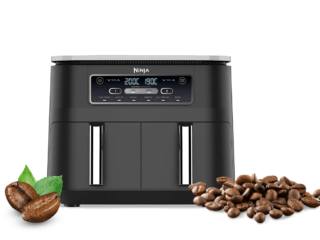Exploring the Differences Between Pour-Over, French Press, and Espresso
Are you a coffee lover trying to choose the perfect brewing method? French press, Espresso, and pour-over may seem alike, but they have their differences. Let’s dive in and explore what sets each method apart so that you can make an informed decision about your next cup of joe!
Whether you prefer the full-bodied flavor of French press, the concentrated richness of Espresso, or the clean and nuanced taste of pour-over, mastering these brewing methods is a must for any coffee lover looking to explore the most in demand coffee recipes across the world.
What is Pour-Over Coffee:
Pour-over coffee is a coffee brewing method that’s known for its simplicity and deliciously clean taste. With this method, hot water is manually poured over freshly ground coffee beans in a filter cone, which slowly drips through the grounds to extract their unique flavors and aromas. The circular pouring motion ensures even extraction, producing a bright and nuanced cup of coffee that’s perfect for any coffee lover looking for a pure and flavorful experience.
How to Make Pour-Over Coffee
To make pour-over coffee, you will need the following equipment:
- Pour-over cone (such as a Hario V60 or Chemex)
- Paper filter
- Freshly roasted coffee beans
- Burr grinder
- Kettle with a spout
- Scale
- Timer
- Mug or carafe to brew into
Here are the steps to make pour-over coffee:
- Boil Water: Bring water to a boil, then let it cool for about a minute until it reaches a temperature of around 200-205°F (93-96°C).
- Grind Coffee: Grind coffee beans to medium-fine grind size. Aim for a consistency similar to sea salt.
- Rinse Filter: Place a paper filter in the pour-over cone and rinse it with hot water. This will help remove any papery taste from the filter and warm up the cone.
- Add Coffee: Place the pour-over cone on top of the mug or carafe, and add the ground coffee to the filter.
- Bloom: Pour just enough hot water over the coffee to wet it completely. Allow the coffee to bloom for 30 seconds as carbon dioxide is released.
- Pour: Start pouring water in a circular motion, starting from the center and moving outwards. Pour slowly and steadily, making sure to saturate all of the coffee grounds.
- Repeat: Continue pouring water in a circular motion until you have added the desired amount of water. A good rule of thumb is to use a ratio of 1:16 coffee to water (e.g. 20g of coffee for 320g of water).
- Wait: Let the coffee drip through the filter until it has finished brewing. This should take about 3-4 minutes.
- Enjoy: Remove the filter and discard the used grounds. Pour the coffee into your mug or carafe and enjoy your delicious pour-over coffee.
Remember to adjust the grind size, water temperature, and pouring technique to achieve your desired taste profile.
What is a French Press:
For coffee lovers seeking a rich and full-bodied cup of joe, a French press is a classic and reliable brewing method to try. This cylindrical container, also known as a press pot, features a plunger and a metal or nylon mesh filter. After adding ground coffee and hot water, the mixture is steeped for several minutes before plunging to separate the brewed coffee from the grounds.
The result? An intense and satisfying flavor with a heavy mouthfeel that’s sure to please any coffee aficionado.
How to make a French press Coffee:
To make French press coffee, you will need the following equipment:
- French press (also known as a press pot)
- Freshly roasted coffee beans
- Burr grinder
- Kettle
- Timer
- Mug or carafe to brew into
Here are the steps to make French press coffee:
- Boil Water: Bring water to a boil, then let it cool for about a minute until it reaches a temperature of around 200-205°F (93-96°C).
- Grind Coffee: Grind coffee beans to a coarse grind size. Aim for a consistency similar to breadcrumbs.
- Preheat the French Press: Add hot water to the French press to preheat it. Then, pour the water out.
- Add Coffee: Add the ground coffee to the French press.
- Add Water: Pour hot water over the coffee grounds, filling the French press about three-quarters of the way full.
- Stir: Use a spoon to stir the coffee and water together, making sure all of the coffee is fully saturated.
- Steep: Place the lid on the French press, but do not press down the plunger. Set a timer for 4 minutes and allow the coffee to steep.
- Plunge: After 4 minutes, press down the plunger slowly and steadily until it reaches the bottom of the French press.
- Serve: Pour the coffee into your mug or carafe and enjoy your delicious French press coffee.
What is an Espresso:
Espresso is a highly-concentrated coffee beverage that’s made by forcing hot water through finely-ground coffee beans using an espresso machine. This brewing process produces a thick and creamy shot of coffee that’s packed with complex and intense flavors, thanks to the high pressure and temperature used to extract the oils and flavors from the beans.
Whether enjoyed on its own or used as a base for other coffee beverages, espresso is a popular and beloved option for coffee enthusiasts around the world.
How to make an Espresso:
To make espresso, you will need an espresso machine, freshly roasted coffee beans, a grinder, and a tamper. Here are the steps to make espresso:
- Fill the Water Tank: Fill the espresso machine’s water tank with fresh, cold water.
- Heat the Machine: Turn on the espresso machine and let it heat up for about 15-20 minutes. Most machines have an indicator light that tells you when it’s ready.
- Grind the Coffee: Use a burr grinder to grind the coffee beans to a fine, consistent grind. You’ll need about 7-9 grams of coffee for a single shot and 14-18 grams for a double shot.
- Tamp the Coffee: Use a tamper to pack the coffee grounds tightly into the portafilter. The surface of the coffee should be even and flat.
- Lock the Portafilter: Insert the portafilter into the espresso machine and lock it into place.
- Extract the Espresso: Place a demitasse cup under the spout and start the extraction. The espresso should start to flow within a few seconds. A single shot should take around 20-30 seconds to extract, and a double shot should take around 25-35 seconds.
- Stop the Extraction: Once you’ve extracted the desired amount of espresso, turn off the machine and remove the demitasse cup.
- Clean the Machine: Remove the portafilter and discard the used coffee grounds. Rinse the portafilter and basket with hot water and wipe down the machine with a damp cloth.
- Enjoy: Serve the espresso straight up, or use it as a base for cappuccinos, lattes, and other espresso-based drinks.
Summary:
In summary, pour-over coffee produces a clean and bright cup with nuanced flavors, French press coffee creates a rich and full-bodied cup with a heavy mouthfeel, and espresso produces a concentrated, complex, and intense shot of coffee. Each method has its unique characteristics, and the choice of method depends on personal preference and the desired taste experience.
About CoffeeCode
This article is written by the team at CoffeeCode, the UK’s fastest growing and most exciting coffee website. CoffeeCode has a focus on great coffee, inspirational design and sustainability.





